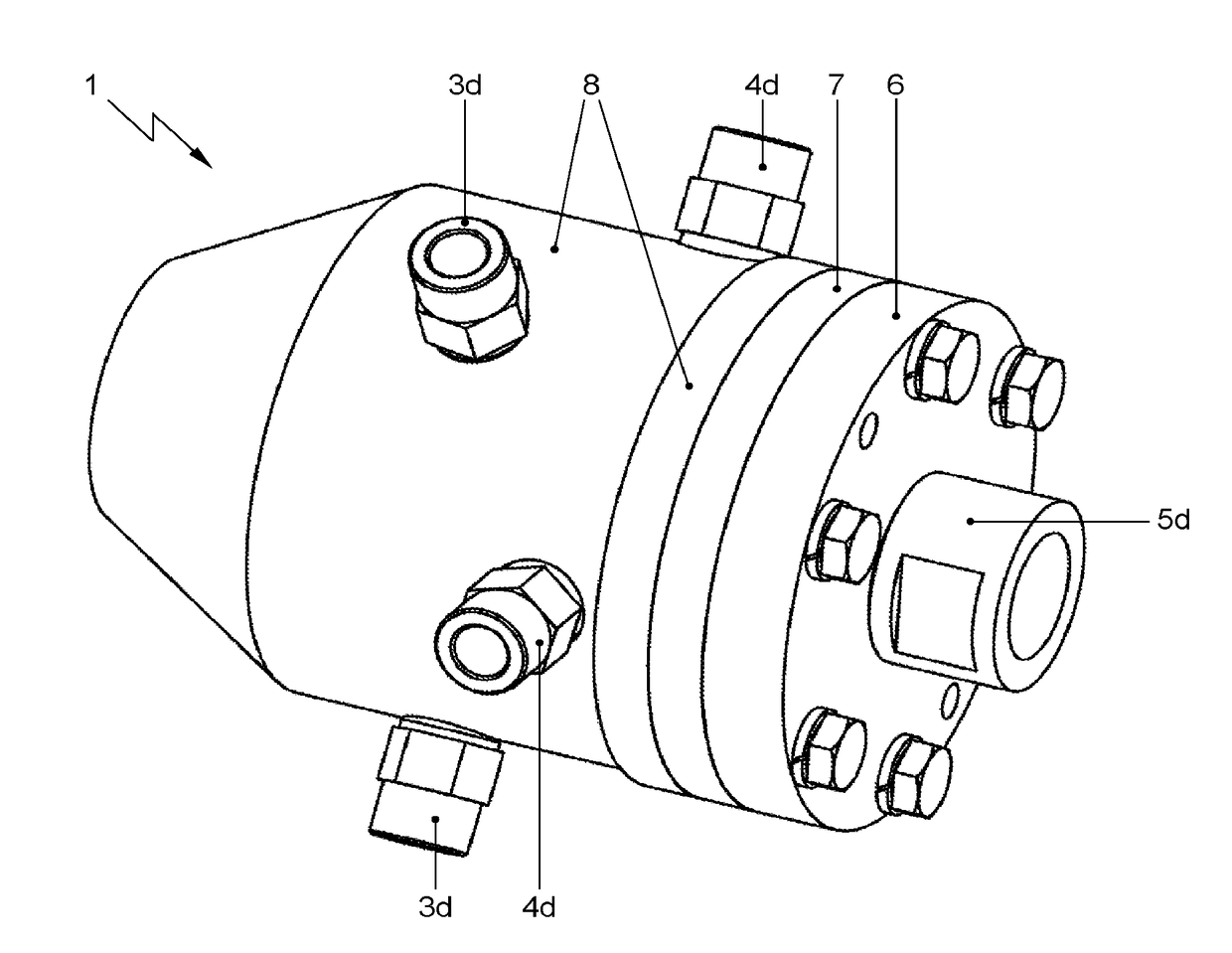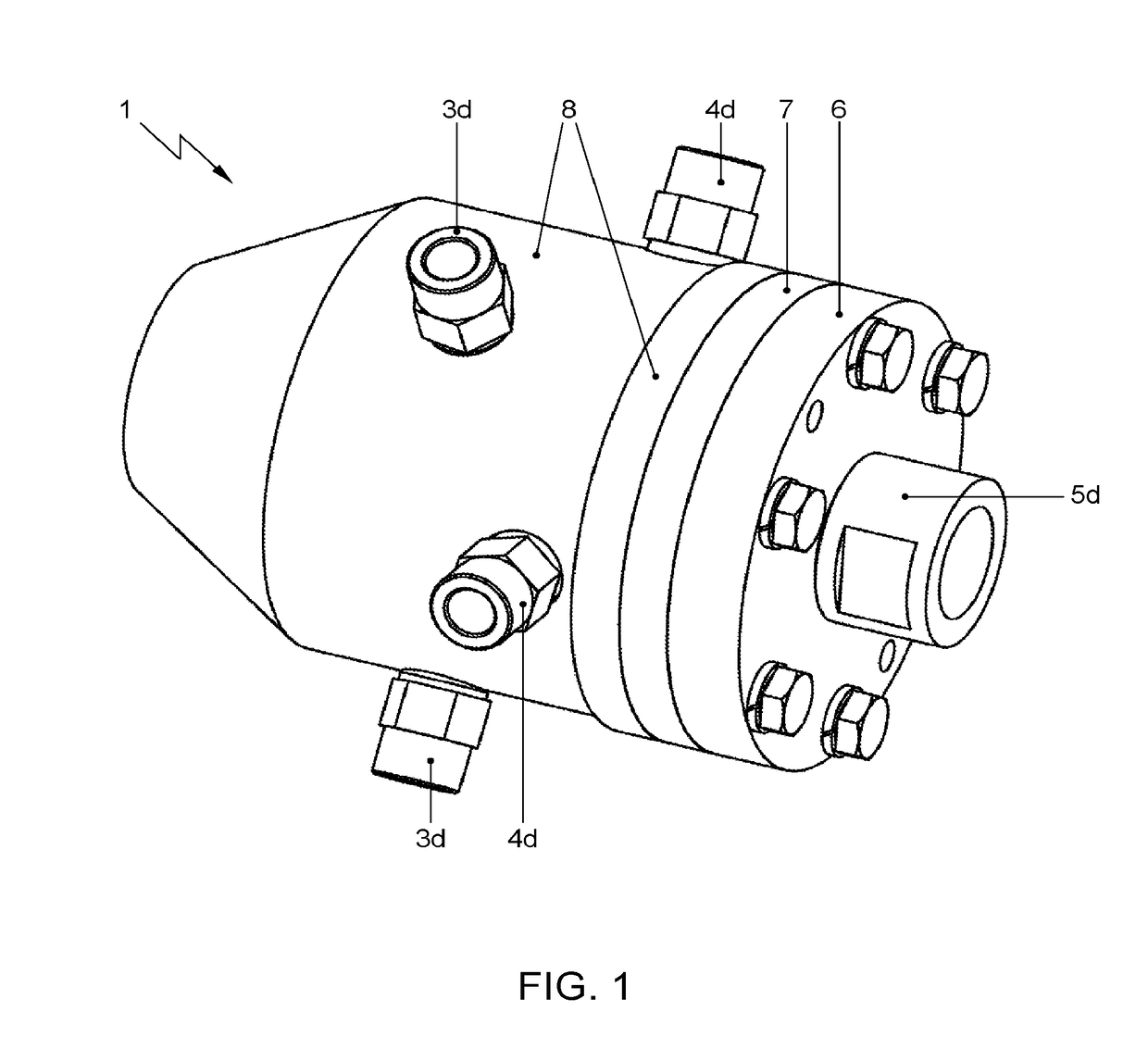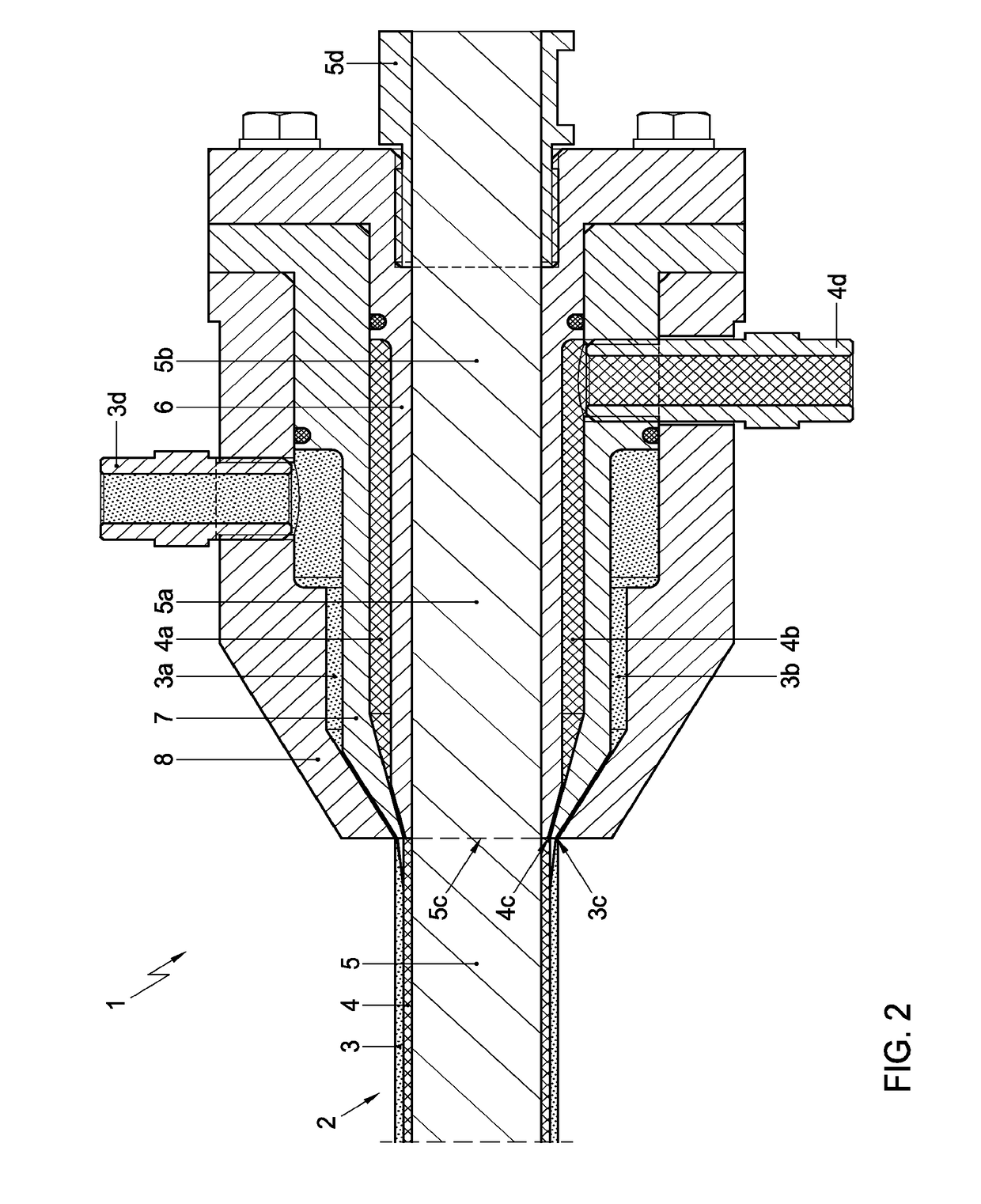Food product and method of preparation
a technology of food products and methods, applied in the field of food products, can solve the problems of serious impairing of the cooking properties of food products, discoloration of the skin, and affecting the taste of the sausage, and achieve the effect of improving the skin's properties
- Summary
- Abstract
- Description
- Claims
- Application Information
AI Technical Summary
Benefits of technology
Problems solved by technology
Method used
Image
Examples
example 1
[0061]37.5 grams of Citrem 3212™ and PGPR™ were each dissolved in 1175 grams of sunflower oil.
[0062]250 grams of calcium chloride was dissolved in 1000 grams of water.
[0063]The calcium chloride solution was emulsified in the oil / emulsifier mixtures in a bowl cutter and 7500 grams of bovine collagen fibres at 5% protein were dispersed in the emulsion. Acetic acid was added to reach a pH of 4.3. The resulting dispersion was run through a Stephan micro cutter and subsequently deaerated in de vacuum mixer.
[0064]This composition was used to make a barrier layer in a sausage by feeding it to an extruder as depicted in FIG. 1.
[0065]The casing was prepared by feeding a composition comprising sodium alginate, collagen fibers, liquid smoke derivative and acidulants to the extruder.
[0066]The extrudate was fed through a 10% solution of calcium chloride in water, thus producing a sausage.
[0067]The sausage thus produced was of excellent quality, in particular with respect to color and firmness of...
example 2
[0068]Example 1 was repeated with a different composition for the barrier layer.
[0069]A barrier layer composition comprising 2% HPMC, 4% Kapro P100, 5% CaCl2 and balance water was prepared in a bowl cutter as follows.
[0070]CaCl2 was dissolved in the water at 20° C. The HPMC and Kapro were added and the bowl cutter was run until all components were well distributed and dispersed. Acetic acid was added to reach a pH of 4.3 The contents of the bowl cutter were then transferred to a vacuum mixer for deaeration. This composition was used to make a barrier layer in a sausage by feeding it to an extruder as depicted in FIG. 1.
[0071]The casing was prepared by feeding a composition comprising sodium alginate, collagen fibers, liquid smoke derivative and acidulants to the extruder.
[0072]The extrudate was fed through a 10% solution of calcium chloride in water, thus producing a sausage.
[0073]The sausage thus produced was of good quality, in particular with respect to color and firmness of the ...
example 3
[0074]Example 1 and 2 were repeated with a different composition for the barrier layer.
[0075]A barrier layer composition comprising 4% Kapro P100, 10% sunflower oil, 2% HPMC, 5% CaCl2 and 79% water was prepared in a bowl cutter as follows.
[0076]CaCl2 was dispersed / dissolved in the water and Kapro was added. Then the oil was slowly added in the running bowl cutter. When oil was well emulsified HPMC was added and well dispersed. Acetic acid was added to reach pH 4.3. The contents of the bowl cutter were then transferred to a vacuum mixer for deaeration.
[0077]A sausage was prepared in the same manner as in the previous Examples, using the same casing composition.
[0078]The sausage thus produced was of good quality, in particular with respect to color and firmness of the skin.
PUM
| Property | Measurement | Unit |
|---|---|---|
| weight ratio | aaaaa | aaaaa |
| diameter | aaaaa | aaaaa |
| diameter | aaaaa | aaaaa |
Abstract
Description
Claims
Application Information
 Login to View More
Login to View More - R&D
- Intellectual Property
- Life Sciences
- Materials
- Tech Scout
- Unparalleled Data Quality
- Higher Quality Content
- 60% Fewer Hallucinations
Browse by: Latest US Patents, China's latest patents, Technical Efficacy Thesaurus, Application Domain, Technology Topic, Popular Technical Reports.
© 2025 PatSnap. All rights reserved.Legal|Privacy policy|Modern Slavery Act Transparency Statement|Sitemap|About US| Contact US: help@patsnap.com



